The perfect snow day for photographers has to be where the clouds are high and thin, making a huge softbox for the sun to evenly illuminate the ground. I usually am looking for medium soft shadows where you can easily see details in them. The clear blue sky typical of winter results in stark shadows cast by the untempered sun, with extreme contrasts between the snow in the sun and snow in the shade. Alternatively, the other typical winter days of overcast result in no shadows at all, just an even grey cast over the whole landscape. What’s a person to do when the itch to photograph a landscape turns up?
Well, on a cloudy day you can bring your own sunshine and make your own shadows. Off-camera flash units are perfect for this sort of light manipulation. You put them where you want light, attach a light modifier of some sort and adjust to give the amount of light you want. These are fill lights only – you aren’t going to be able to illuminate acres of ground. No, this is like big light painting – you put light where you want and use composition to create the total image.
Here’s a before and after of what I’m talking about:
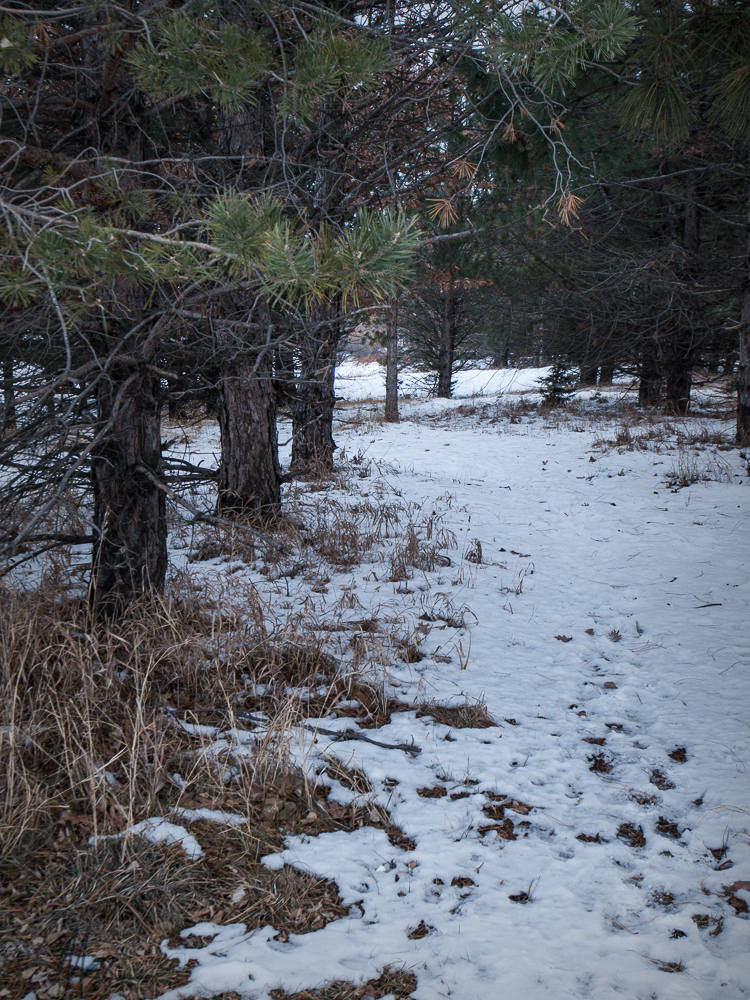 ISO 100, 24mm, 1/20 sec., f/7.1 – no flash |
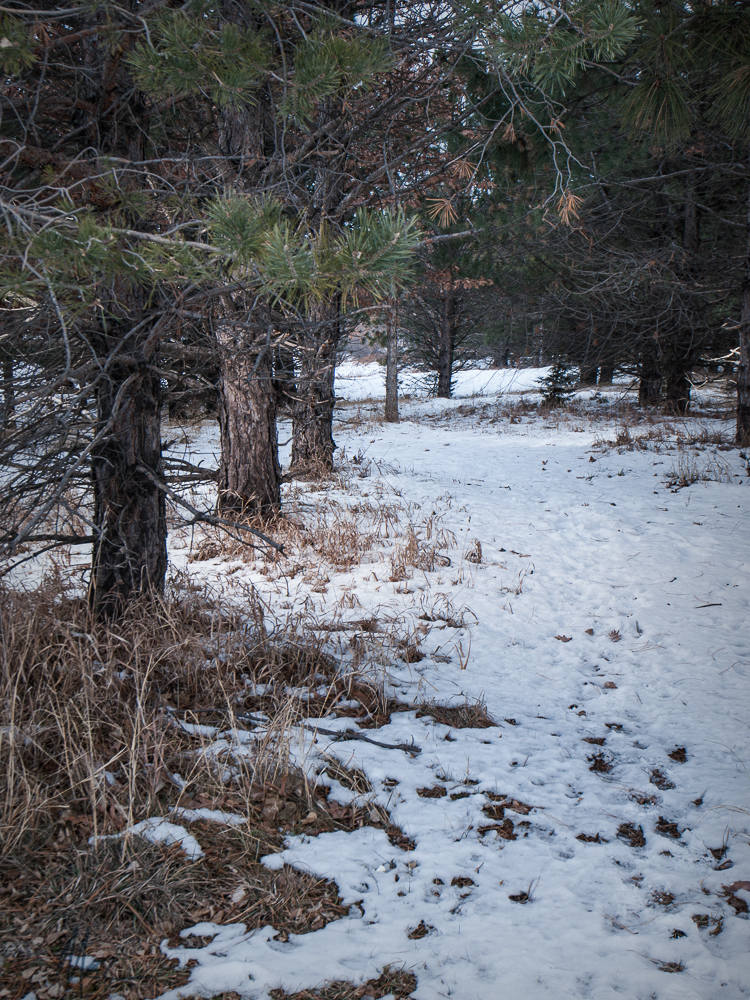 ISO 100, 24mm, 1/20 sec., f/7.1 – flash applied |
Sometimes you just need a little extra light to bring more interest to the image. I used three flash units in the “after” image: one between the first and second tree on the left, one between the second and third tree on the left and one behind the distant tree on the right. The first two have a softbox and white reflector attached, respectively. The third one is just a bare flash. Each one is attached to a PocketWizard radio trigger so they all fire when the shutter is released. I like the PocketWizard because the range is well over 1000′ so I can place the flash units where ever I want. I do wish the Olympus system had a wireless flash adjustment, though, so I wouldn’t have to run around to all the units to adjust the power levels between shots.
Obviously this is more than the on-camera flash built into the camera body, and all those flash units and transmitters do cost extra. I use mine for multiple purposes, including the rare portrait or group image, so I could justify the purchase. I like taking the sun around with me for when I need it but it’s more gear to buy and haul around so it might not be for everyone.
Others were using the late evening light as well. The local deer are able to reach grass under the snow now that it has melted a bit. It’s amazing to think how an animal of this size finds enough food to stay alive in the cold. There was still some green grass under the trees, however, and the last snow came down heavy enough to insulate it from the bitter cold of the last week. Deer will paw away snow to find food and I caught this one in the act.
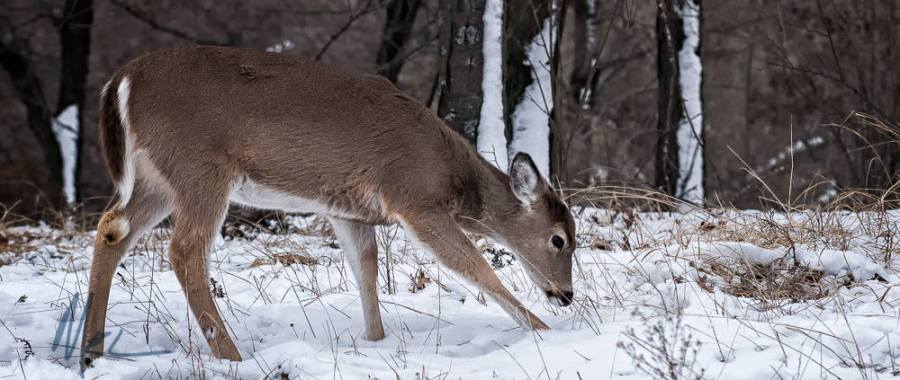
ISO 100, 100mm, 1/250 sec., f/4.5
They have put on a nice winter coat this year and don’t appear to be too thin. Talking with one of the park supervisors I learned they get feed supplements as well, placed at various places around the park away from where people will disturb them. Must be working for them otherwise I think they would hang out around the road begging for handouts.
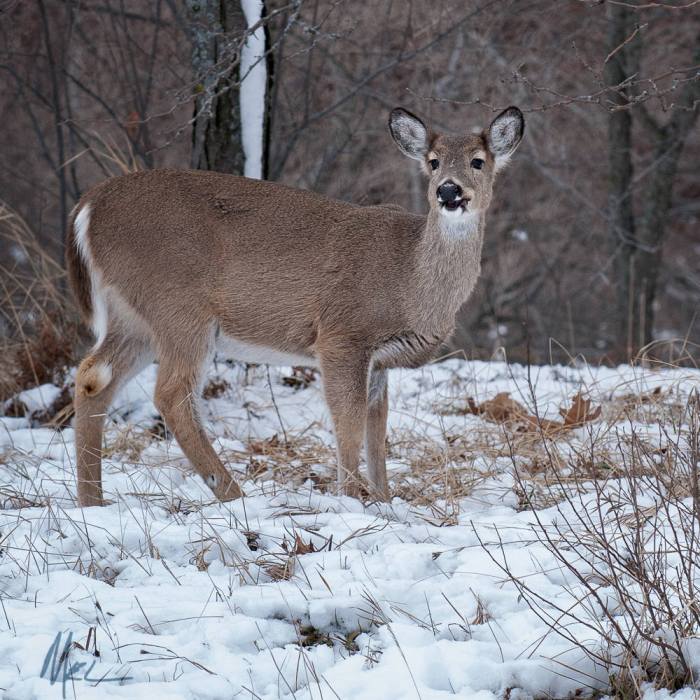
ISO 100, 100mm, 1/80 sec., f/4.5
Today they were moving around in groups, some feeding and some just lying around. I’ve read their winter coat is so well insulated they can lay down on the snow and not melt it. Has to do with the hollow hairs of the outer layer of their coat. Sometimes you can see them walking around with snow on their back that isn’t melting either.
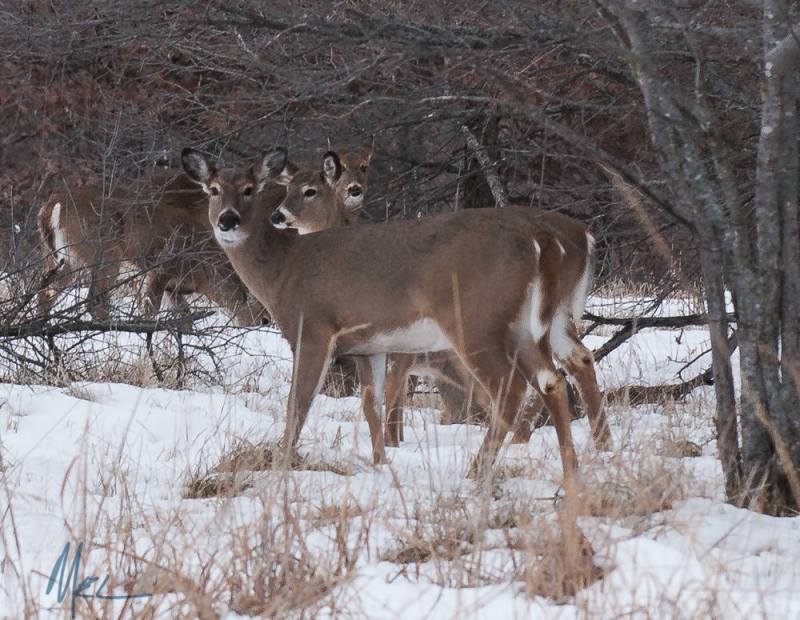
ISO 100, 100mm, 1/100 sec., f/4.5
They see a lot of car traffic through the park, most of it looking for them. As a result they usually ignore vehicles passing by but every once in a while something will catch their attention and then everyone has to look up and see what’s happening.
I could have used one of the flash units to put a small catch light in their eyes – I don’t think it would have bothered them. My lens was resting on the window and I was about 50 feet away so I’m pretty sure my best flash would have reached. Perhaps next time I’ll plan on that and have all the gear ready to go. For today I was happy to bring some light to the trees and photograph the deer au naturale.
You continue to amaze, instruct, and inspire me. Nowhere else have I seen anyone describe using what is essentially a studio technique to enhance a landscape by controlling the light. Wow. I especially appreciate that you went to the trouble of describing the set-up and posted before and after photos. I was thinking before that I was going to have to reconcile myself to long periods of flat lighting, but now I am stimulated to think creatively of changing that situation for a photo. Thanks to for sharing the deer photos. I love shots of wildlife in the snow. If we ever get some snow here in Virginia, I’ll be looking for similar opportunities.
LikeLike
Mike, thanks for your kind words. By all means get out there and experiment with landscape and wildlife images using whatever tools you can get. One of my classmates set up a flash and remote trigger near his bird feeder, using a shutter speed just slow enough to get some blur but with the flash to “freeze” the action a little. Very nice images and something I would not have thought about doing. If you do any interior “architectural” photography placing the flashes around the room to highlight corners and under furniture is a good idea to bring some pop to a photograph. Glad you found the instruction useful – it comes from me looking at images and wondering how someone would do that, and then how would you explain it.
LikeLike